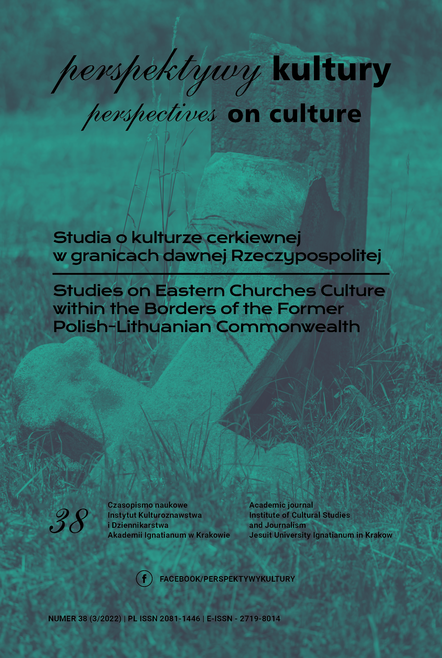Introduction
Abstrakt
One of the most significant changes in Polish historical studies after 1989 has been the increased interest in restoring the memory about the multicultural traditions of the Former Polish-Lithuanian Commonwealth. The liberation of Poland from Russian influence and the independence of Lithuania, Ukraine and Belarus have opened a new chapter not only in the political history of Europe and the world, but also in research on the cultural heritage of these nations. Today, it is possible to ask questions about the common heritage of Ruthenians and Poles, on top of their distinctiveness, autonomy and independence. Today, it is possible to objectively assess the originality of the Orthodox culture in the Commonwealth, in addition to its dependence on other Orthodox intellectual centers as well as models of Western civilization. Researchers from Poland and abroad, young scientists and experienced specialists, representatives of the academia, the socalled academic social environment and independent researchers have been helping us in the search for answers to these difficult questions for years. We believe that the thus formed broad and international team of scholars representing various scientific disciplines and methods, confessional and cultural traditions, and having different professional and life experiences, is able to fully recreate the obliterated pages of common history of the now separate nations: Poles, Lithuanians, Ukrainians and Belarusians.
Copyright (c) 2022 Akademia Ignatianum w Krakowie

Utwór dostępny jest na licencji Creative Commons Uznanie autorstwa 4.0 Międzynarodowe.
Autor, zgłaszając swój artykuł, wyraża zgodę na korzystanie przez Wydawnictwo Uniwersystet Ignatianum z utworu na następujących polach eksploatacji:
- utrwalania utworu w formie papierowej, a także na nośniku cyfrowym lub magnetycznym;
- zwielokrotnienia utworu dowolną techniką, bez ograniczenia ilości wydań i liczby egzemplarzy;
- rozpowszechniania utworu i jego zwielokrotnionych egzemplarzy na jakimkolwiek nośniku, w tym wprowadzenia do obrotu, sprzedaży, użyczenia, najmu;
- wprowadzenia utworu do pamięci komputera;
- rozpowszechniania utworu w sieciach informatycznych, w tym w sieci Internet;
- publicznego wykonania, wystawienia, wyświetlenia, odtworzenia oraz nadawania i reemitowania, a także publicznego udostępniania utworu w taki sposób, aby każdy mógł mieć do niego dostęp w miejscu i czasie przez siebie wybranym.
Wydawca zobowiązuje się szanować osobiste prawa autorskie do utworu.





